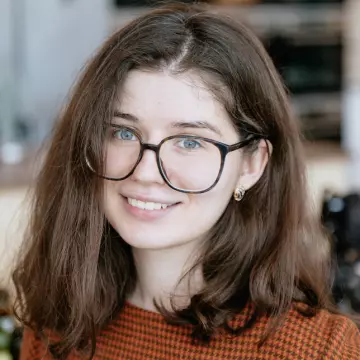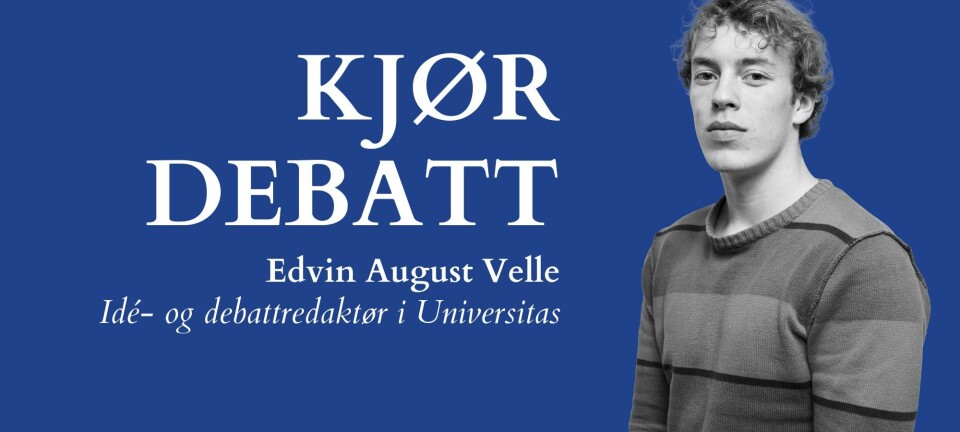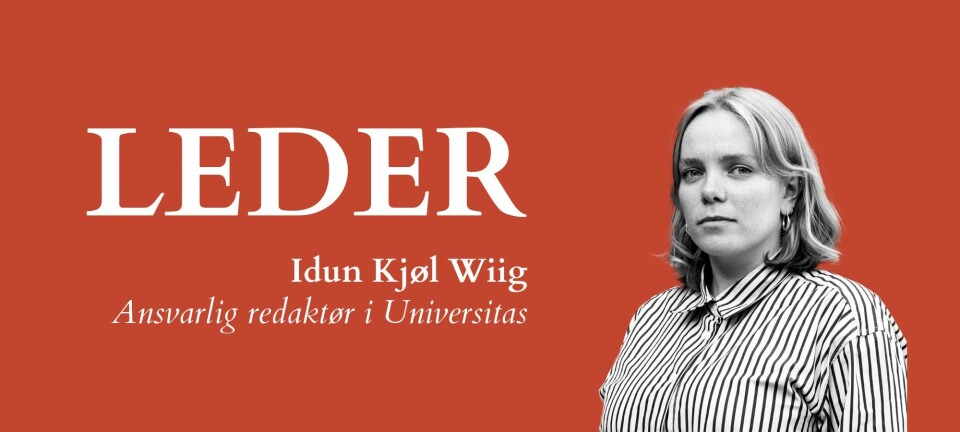#Events
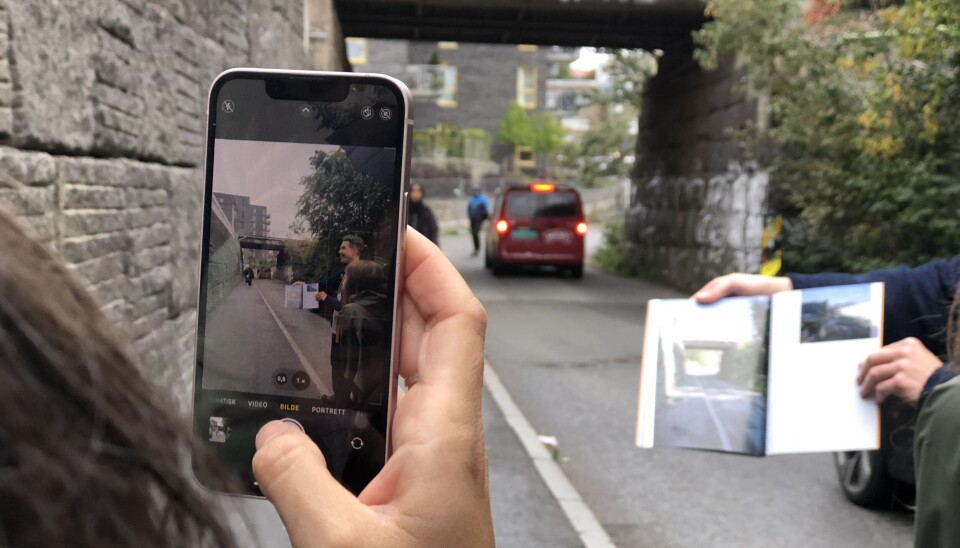
A Night of Free Culture
Inter Universitas covering Oslo kulturnatt 2023
With color meditation, art walks, parties in museums, and children’s performances, the night of September 15, 2023 was a true cultural bliss – and absolutely free on top of that. Attending every event in the city was a mission impossible (over a 100 of them throughout the day!), but our team managed to swing by a handful – and is reporting on how everything went.
Designed to celebrate & promote culture
Held in September every year, Oslo kulturnatt (Oslo Culture Night) is one of the most vibrant events in the city’s cultural life. “Our mission,” writes Emilie Marlow, the coordinator for Oslo kulturnatt 2023, in an email to Inter Universitas, “is to show everyone how rich Oslo's cultural scene is. We aim to inspire people to explore our museums, galleries, and other artistic locations for the rest of the year, too.”
Almost every museum in the city, as well as every gallery, art space, and theater, invite the public to attend installations, performances, shows, workshops, talks, concerts, dances, etc. – with no admission fee whatsoever. Oslo kommune (Oslo Municipality) is behind the decision to make Oslo kulturnatt free: “We want to get as many people as possible to enjoy art, regardless of any economic challenges they may face,” explains Emelie further. “It is the 18th time we have held the Culture Night in Oslo – and this time we’ve set a new record: there were 250 events happening around the city throughout the day! And even the rain did not stop anyone from attending – which made our whole team very happy!”
Attending Oslo kulturnatt 2023
September 15 was an undeniably rainy night – but is it really surprising in the capital of Norway in the fall? The longer you live in the country, the more used to you get to always having a raincoat and/or umbrella tucked in your backpack. Rain comes and goes as it pleases, and there was no way it could have stopped the Inter Universitas team from attending Nasjonalmuseet and Melahuset, almost-visiting Kunsthall gallery, and even hosting a kindergarten performance.
Where music meets art – Nasjonalmuseet
“This is the second time Nasjonalmuseet is taking part in Oslo kulturnatt,” writes Simen Joachim Helsvig to Inter Universitas. “We have devised a much broader program this time around to attract a wider range of audience – people from all age groups.” With approximately 4600 guests visiting the museum on the night of September 15, the goal was certainly achieved.
Offering kitting and drawing workshops and historical tours, Nasjonalmuseet was definitely one of the most popular locations of Oslo kulturnatt. At 5 pm, the official kick-off time for most of the events, there were long and chatty lines of people in the museum already – both to get free green tickets from the staff and to scan them with ever-vigilant guards. “Do you have an umbrella in your purse, m’am?” one asked me as I showed him my ticket. With my distaste for lockers, I preempted the question and had a green raincoat to protect me from the rain, which conveniently looked like a long jacket of sorts. No coat check-in for me!

As I walked upstairs, I could already hear the soothing beats by DJ Daeva from Salongen – a spacious lounge on the second floor of Nasjonalmuseet. World music has always had a special kind of sway over me, of almost teleporting nature, and I sat on the beige meandering sofas for nearly an hour, taking it in. I knew I would come back there closer to the end of the night, this time to dance all the stress out of my body, but first I wondered what it was like – to meditate by an artwork.
“Different colors reside in our bodies,” explains Axel Haugland, a tall man with bright kind eyes and a red beard, who is leading color meditation at Nasjonalmuseet together with Nicolina Stang. “It is an old chakra technique we are using in this meditation, complementing it with sound bowls and a variety of different music instruments.” There are flutes, drums, and even a harp spread out evenly in front of Axel and Nicolina who were invited to host it in front of the “Escalade Beyond Chromatic Lands,” a colorful plushy artwork by Sheila Hicks. Around 30 yoga mats and pillows are laid out by it, already occupied, but that does not stop anyone from simply settling in on the floor for the next 20 minutes. A usually quiet room, it is filled with tunes and melodies, resonant sighs of relief, and Axel’s cheery voice: “Do you see the color orange?”
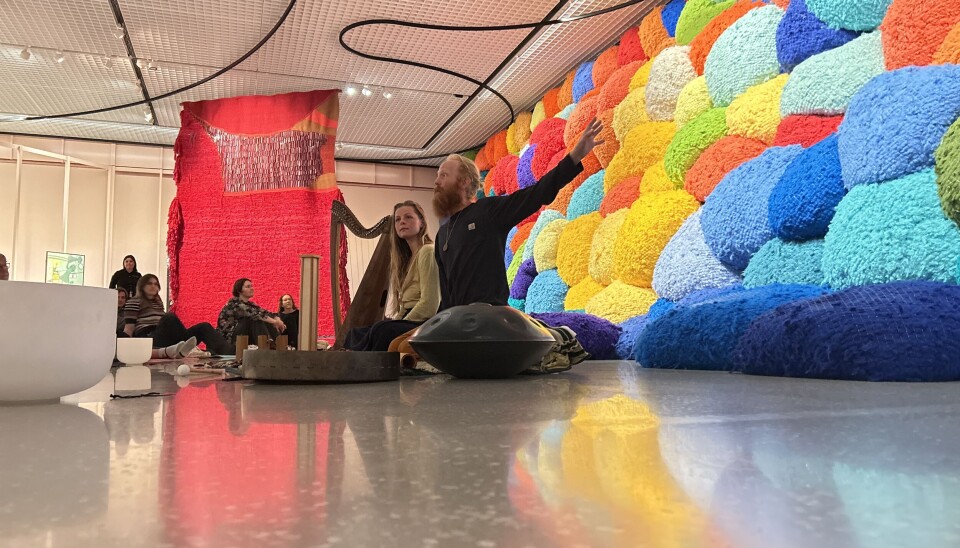
I do not, and as Axel explains, it requires concentration and willpower to be able to evoke colors in one’s mind and experience them. Meditation is relatively new to me, and no matter how hard I try to focus my attention on my breath, my mind inevitably wanders. And then, suddenly, I see it – light blue, as the sky, in between my brows, the color of one’s life’s goals, according to Axel, and I feel lukewarm tears in the corners of my eyes. I realize I have just discovered something fundamental about myself, and it is endless appreciation that I feel at the end of the meditation.
It is with this feeling that I go downstairs for the classical music concert. Vrimleområde looks like an improvised philharmony already, with cellos and music stands awaiting their masters. Every chair offered by the museum is already occupied, and I perch on the stairs instead, using my raincoat as a cushion. Oslo Kammerorkester, together with Tom Ottar Andreassen, play Vivaldi and Mendelssohn, and oh how well do Baroque and Romantic styles complement each other.
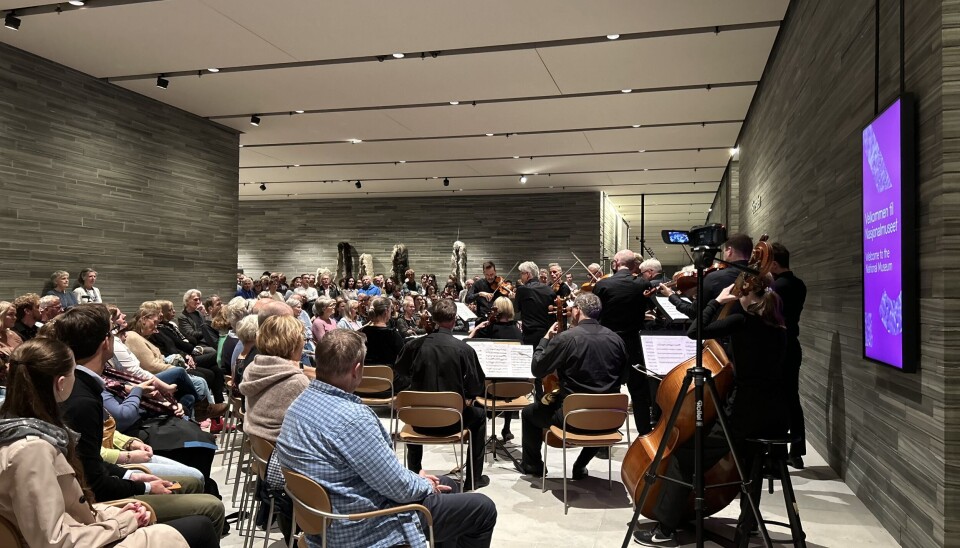
The evening ends where it began – in Salongen, where DJ Daeva, a Norwegian-Iranian visual artist and musician, is about to transform a classy lounge into a dance floor. I order a glass of white wine, land on the same couches and think to myself “There must be someone from my MA program here tonight…” And as I look ahead, there they are – H. and T., looking chic as ever. Oslo is a small city indeed, and I meet another friend, Y., at the end of the night. “I am all sweaty from dancing,” laughs Y., glasses sparkling in the soft yellow lights. I am sweaty, too – DJ Daeva’s music has indeed teleported me somewhere in the Middle East, with its poignant, somewhat sandy ambience.
Four young seasons of entertainment
In celebrating one of the most culturally rich nights in the whole year, Oslo does not forget about its children, as they also have access to enthralling events. One such example is Støperiet Barnehage, where the staff arranged exhibitions and performances based on the theme of the four seasons.
“Since Støperiet's inception, we have been a cultural kindergarten comprehending a large number of employees who have experience with cultural life, so we have always been able to find contributors who are especially enthusiastic about creating something unique each year,” says Stein-Eskil, a board member responsible for organizing Kulturnatt. “The Kulturnatt committee selects the theme based on children's play and curiosity. After brainstorming, 'Season-theme' was chosen to explore what distinguishes a season, children's thoughts on it and weather conditions.”
Being a two floor barnehage, originally constructed as a brickworks building, Støperiet offers four squares, each one for a season. The vast squares were arranged as meeting places for parents and children alike, while single classrooms hosted specific events. Children and adults collaborated to create themed garlands for their squares and Reggio cubes. The squares were given free rein in appearance and content, with children helping decide and create. Examples include paper-painted autumn leaves and snow crystals at Musikktorget and Litteraturtorget, and a Reggio cube decorated with garlands from each corner. In particular, on the second floor, I had the chance to contribute to the winter season’s exhibition, in which a variety of toys (polar bears, mooses and reindeers), tools (cubes, constructions) and unused material (blankets, stuffing, festoons) were rearranged and repurposed to present the most typical Norwegian season. Balloons, snowy cotton blankets and ice were used to provide a white-and-blue playground. Every material was reused and assembled or composed by children, the only involvement adults had was with technological and practical mounting (projectors, construction of wooden boxes, hanging festoons). As a peaceful break from the square’s conviviality, nordic lights were on display in one of the rooms, with projected lights and ambient music.
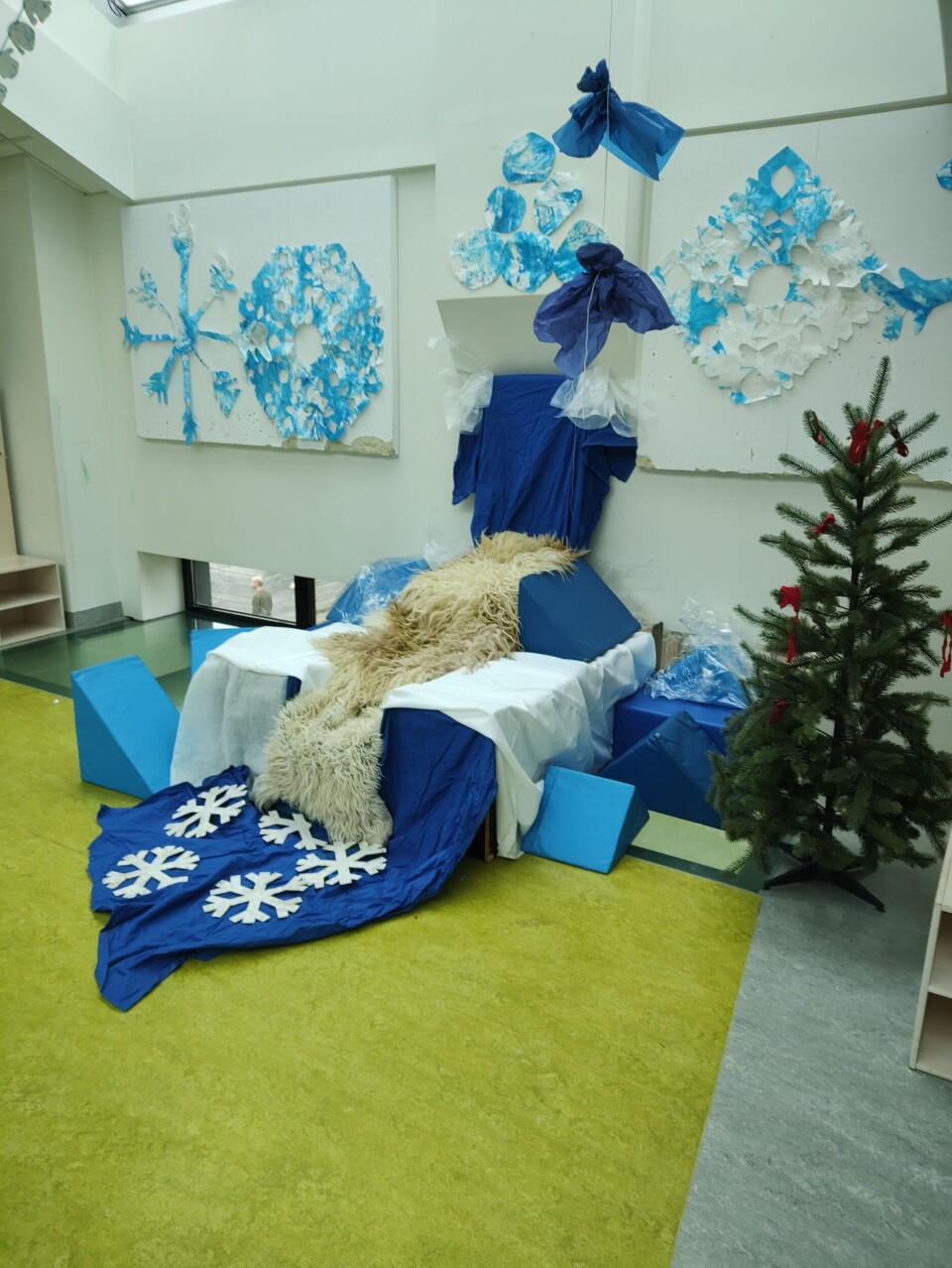
Two major performances took place, the first one being a theatrical skit arranged with both employees and board members portraying the seasons as characters. In the center of the building, around a wooden tree with an open view from each yard, the four protagonists acted with different attitudes and relationships to one another. Spring, with her blossoms, chuckled and handed the bouquet to Summer, who danced with warmth, only to later playfully push Autumn into a swirl of golden leaves; then, as the laughter subsided, Winter blanketed them all in a silent, shimmering embrace. The second performance was a step dance on the second floor, a delightful short footing that soon involved all the 120+ children attending.
The event was certainly a success, and gave children and parents the possibility of coming together in a lively evening.
Becoming the art with Jon Benjamin Tallerås
The new exhibit by Jon Benjamin Tallerås, at Oslo’s Kunsthall gallery, closed last Friday in the artist’s solidarity for the Global Climate Strike. The artist is known for exploring the relationship between individuals and the city. Tallerås has explored unusual acts of using the city and experiencing the city of Oslo in works like the film ‘Errant Wondering” (2012) or ‘Traversing the city’ (2017). On Oslo’s night of culture, the artists pushed the boundaries of art and made the visitors become part of his own artwork in a whimsical tour of the locations discussed in his new book, Footnotes, published by Multipress.
At 4 pm, I joined a group of about fifteen people in front of the Kunsthall building. It was another rainy day in Oslo, but that didn’t stop Jon Benjamin from showing us around the hidden parts of the city. The tour was completely in Norwegian, although I was asked if I felt more comfortable if they talked in English. I refused, since I have been desperately trying to learn the language. Jon talked us through his particular vision of Oslo, romanticizing nature and challenging the relationship we have with the city and the urban spaces. He explained the different uses you can give the city, taking stairs and railing as an example; he explained that while you hold the rails for support and balance as you descend a flight of stairs, skateboarders repurposed this security tool as something dangerous. This is one of the things that mostly intrigue the artist, I perceived with the little Norwegian I got to understand. While walking around the neighborhood of Tøyen, Tallerås made us question the difference between public and private domain as we experienced first hand the transformation this area had gone through, suffering a steady gentrification which shows how fast Oslo is growing.
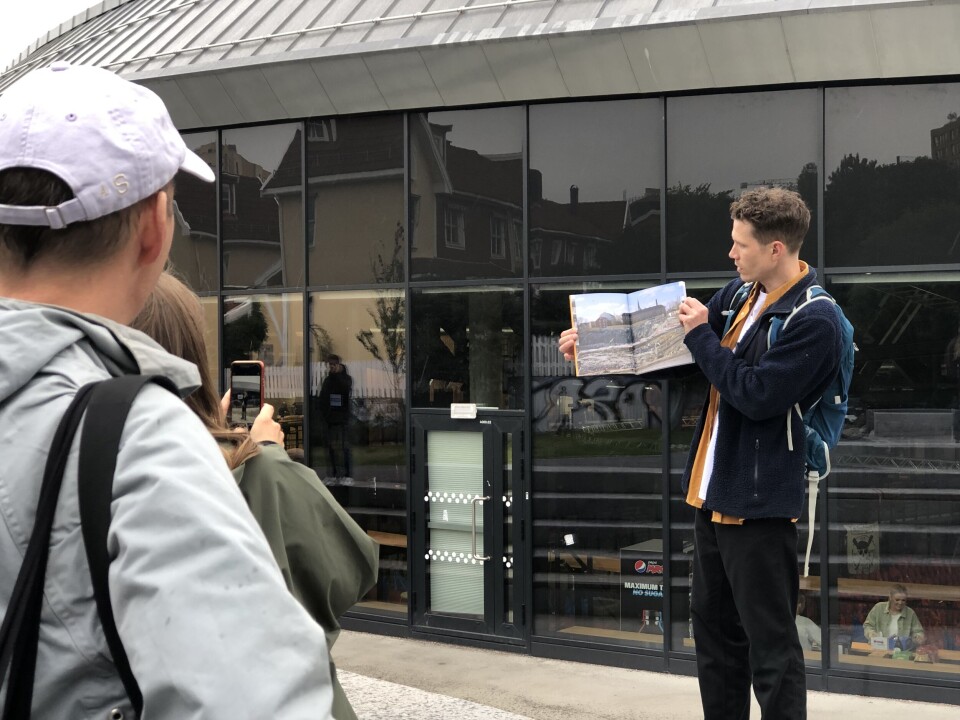
The rainy afternoon finished with an open discussion at a small café. I had spent nearly two hours with very nice people I had just met, walking around Grønland and Tøyen experiencing a different side of Oslo I didn’t know before. People chatted with their beers in hand as Tallerås reflected on his work and the issues he had addressed along the tour, such as gentrification in working class neighborhoods, construction and sustainability. I remained a listener, while I sipped on a warm latte I was also absorbing knowledge on a different side of the city I have just moved into, or at least a few more Norwegian words. Definitely, a culturally enriching experience.
Mini concerts with Trill at the Natural History Museum
For my first event of the evening, I attended a mini concert by the all woman-acapella choir Trill who performed a beautiful choral arrangement of songs from their repertoire and most recent concert on September 22nd, which was a collaboration with the band 1816. Led by conductor Wenche Losnegård, Trill sang a selection of Nordic female pop music, from artists such as Aurora, Susanne Sundfør, Björk and Metteson, in an open space rotunda on the second floor of the Natural History Museum, beside the collection of the Earth’s primordial minerals and rocks, overlooking a crowd who sat beneath them.
I spoke to the lovely Marie, the concert and booking coordinator for Trill, as she finished the final piece to ask her about her time with the choir and their participation in Oslo Cultural Night. “The Natural Museum is such a magnificent place [to perform], especially since they renovated it last year. We get to walk past beautiful gems and crystals as well as fascinating skeletons and specimens on our way to the rotunda, where we perform.” With the museum granting free-entry for the night, the venue was full of families, couples and tour guided-groups who were either pleasantly surprised by or were in anticipation of Trill’s arrangement, which echoed through the building.
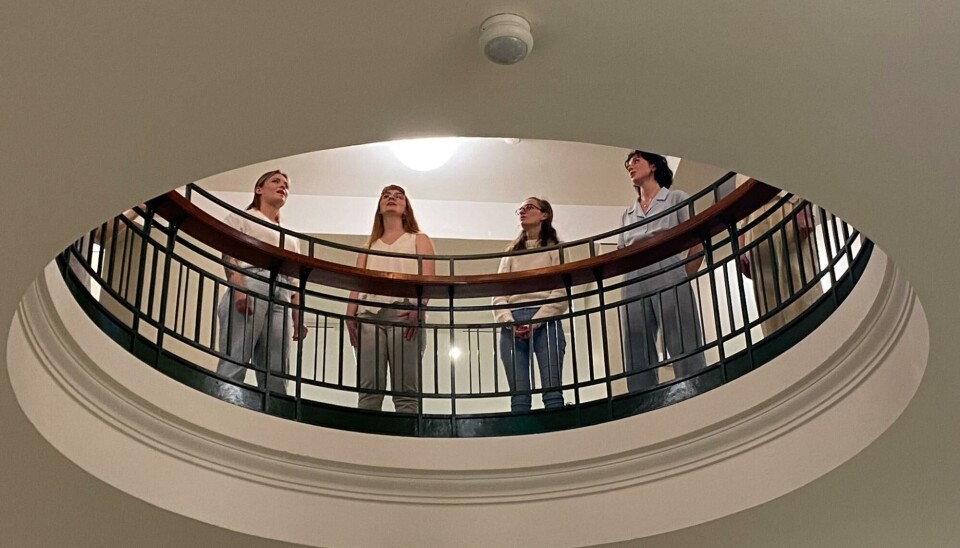
“The rotunda itself has amazing acoustics, and we love performing there,” says Marie. “I also think it's a fun way of performing to an audience, overlooking the audience downstairs. I could see some of them lying on their backs, looking up at us and enjoying the music in a completely relaxed way.”
Marie, having joined the choir in August 2022 after watching their summer concert in June, was blown away by their “ethereal, goosebump-inducing performance” and this solidified her desire to be part of a choir, which she had contemplated for some time. “Trill’s repertoire aims to bring to light Nordic, particularly female, singers and composers and we constantly seek to develop and enlarge our repertoire, taking into account the different kinds of concerts and performances we want to cater to, such as weddings, Christmas markets, or our own concerts!”
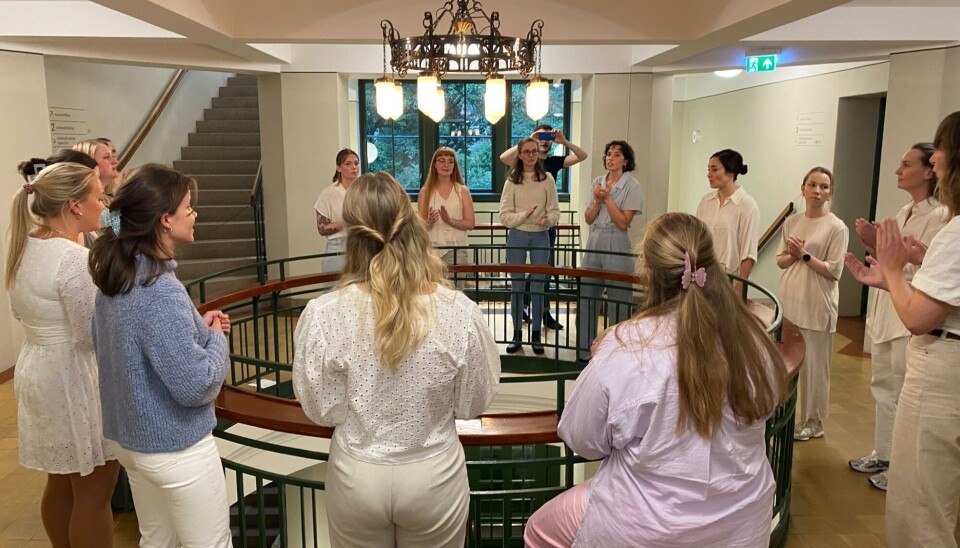
Craft as a starting point of all
I chose to attend two events this Culture Night, both based at Anatomigården at Rådhusgata 19 and centred on the topic of touch and senses. At BO (Billedkunstnere i Oslo), situated on the first floor, there was an installation called “On lycanthropy, fabulation & waving spells.” Behind this confusingly long name stands an Oslo-based visual artist and musician Simon Daniel Tegnander Wenzel who focuses on texture, touch, feelings, and contact with the material. He uses objects of earlier hunting times in his craft, and during the installation the guests could observe and touch, for example, knives and daggers. It felt safe to see them there, though the item selection still felt unusual, even uncombined sometimes. For instance, in the room, on other tables there were also all kinds of fabrics, fur, feathers, wood, herbs, soil, utensils, and home repair tools.
The place was giving off a kind of weird but also curious vibe, as one of the attendees articulated. Another guest was most astonished by none other than a regular building foam as part of the installations: “I was thinking that it's some sort of ‘adult playground’ with a little of a modern art vibe to it, but more cosy and warm than contemporary art usually is.”
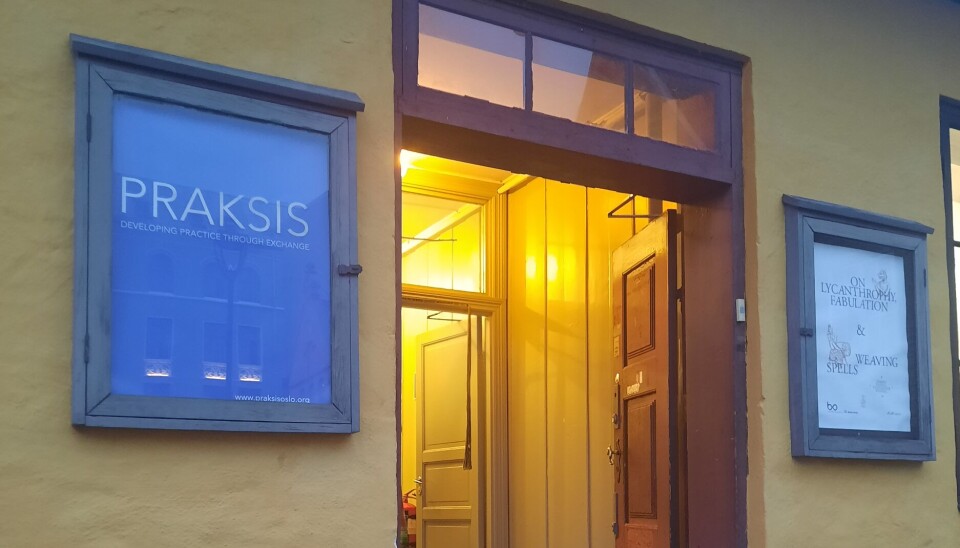
On the second floor of Anatomigården is the space of PRAKSIS, a non-profit centre for art, research and learning that focuses on collective exchange of ideas and practices, places peer-to-peer dialogue, and stands up for diversity and inclusion.The event, “Touch Salon” united works by eleven artists from Norway and abroad around the subject of touch as an artistic medium. This public touch Salon was just one part of a one-month transnational artistic residency programme called “Held” organised by PRAKSIS in collaboration with American artists Nina Sarnelle and Selwa Sweidan and an Oslo-based laboratory for dance, Praxis Oslo.
How was it inside the Touch Salon? The whole second floor was divided into five sections, where people could see short films on human behaviour and interaction, engage with the space itself and surfaces by not only touching tables, sofas, and fabrics, but also through general observation of this mysterious place and by talking with organisers, as they were glad to respond to all kinds of questions that could come to one’s mind, both on the installation itself as well as the artists’ thinking behind it.
The place had its own charismatic atmosphere. A conversation with Nicholas John Jones, the founder of PRAKSIS, and Selwa Sweidan, a PRAKSIS collaborator, offered exciting insights into touch, a sensation and action that I usually take for granted. Nicholas pointed out that "touch is so much a part of our lives that we forget about it most of the time. Yet it links to so many interesting topics, for example, power dynamics, consent, connection, as well as sensation." Selwa told me that for her "touch can be part of anything. It can be an action, process, or something we imagine. We all define and perceive touch in a unique way. It can come in the form of violence, and on the other hand, in the form of pleasure. It can be harmful or healing. It can be a fantastic tool for artistic expression." And indeed, as I was walking away from Anatomigården, I couldn’t help but feel that my perception of touch, awakened by everything I had felt and experienced during the Touch Salon, has notably expanded.
